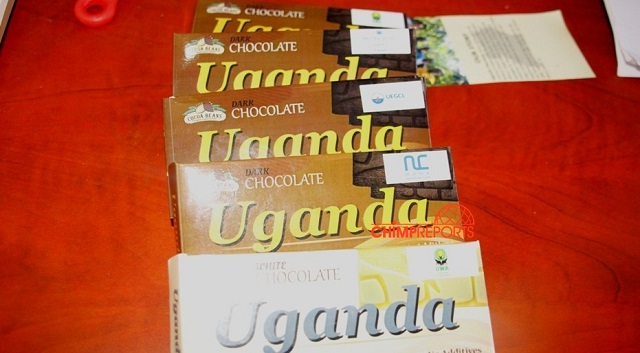
The cocoa business
Sembuya says that at the moment they use about 11 tonnes of dried cocoa beans per month with four tonnes coming from their farm and seven from the outgrowers. Apart from their farm and outgrowers in Buikwe at times they have to get cocoa beans from districts as far Bundibugyo, which is the largest cocoa growing district, Luweero, Kayunga and Mukono.
Under their umbrella association called Cocoa Farmers and Chocolate Processors Association they also carry out training.
For those wishing to invest in cocoa growing Sembuya says you need about 400 cocoa seedlings per acre but they advise the cocoa to be interplanted with trees preferably ‘musizi’ for shade. He explains that from the day of planting a seedling, if well looked after a cocoa plant takes only two years and is ready for harvesting.
The harvesting can go on for another 80-100 years and he gives the example of the cocoa in the West African countries of Ivory Coast and Ghana which is now about 100 years since being planted when the colonialists came to Africa but they are now just talking of replacing the trees.
“Another good thing with cocoa is that it has not been attacked by any serious diseases like for coffee and they only deal with the black mites; which are controlled by light spraying,” Okoye says.
Cocoa tourism
Apart from producing the cocoa pods from which the cocoa beans for the production of chocolate is made, Sembuya says they also use the farm for chocolate tourism and chocolate classes.
“There are many people who don’t know that chocolate is produced from cocoa on farms so we allow them to have guided tours on our farm and take them through the process of how chocolate is produced and many are surprised when they discover the chocolate they buy them from supermarkets comes from,” Sembuya says. He explains that most of the tours are organised by schools.
On the way forward they say they are doing research on how to turn the husks from cocoa into chicken feed like it’s done for maize barn and rice husks. They are also looking at a possibility of turning pods into soap and the pulp juice into wine.
“Our vision is in 10 years is for Pink Foods Industries to be the leading food business in Africa,” Sembuya says.
Since they are the Fair Trade arrangement, where they are required to give back to the community, Sembuya says they have plans to build a health centre in Nkokonjeru Town Council.
Sembuya’s business style
Sembuya says he has a good relationship with his father who gives him advice almost on a daily basis on how to run the business.
“One thing he warned me about is taking on bank loans,” Sembuya says and explains that Uganda does not have development banks but only commercial banks which are only after maximizing profits and its why they charge high interest rates and end up selling off properties of people who fail to pay their loans.
Indeed Sembuya and Okoye say the money they are using to construct the new factory is not a loan from a commercial bank as many banks did not understand their business plan and were asking for unrealistic security and collateral.
 The Independent Uganda: You get the Truth we Pay the Price
The Independent Uganda: You get the Truth we Pay the Price



